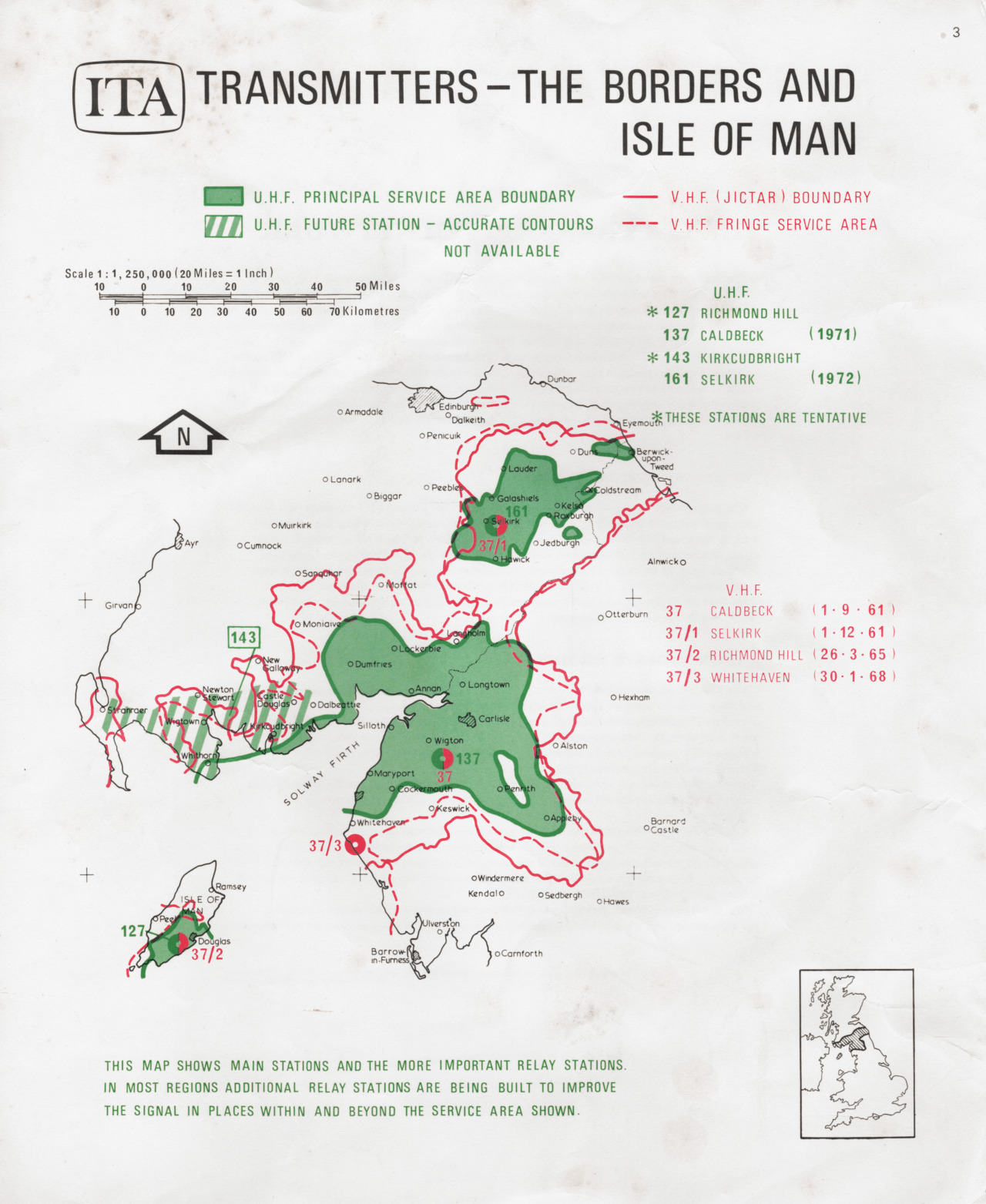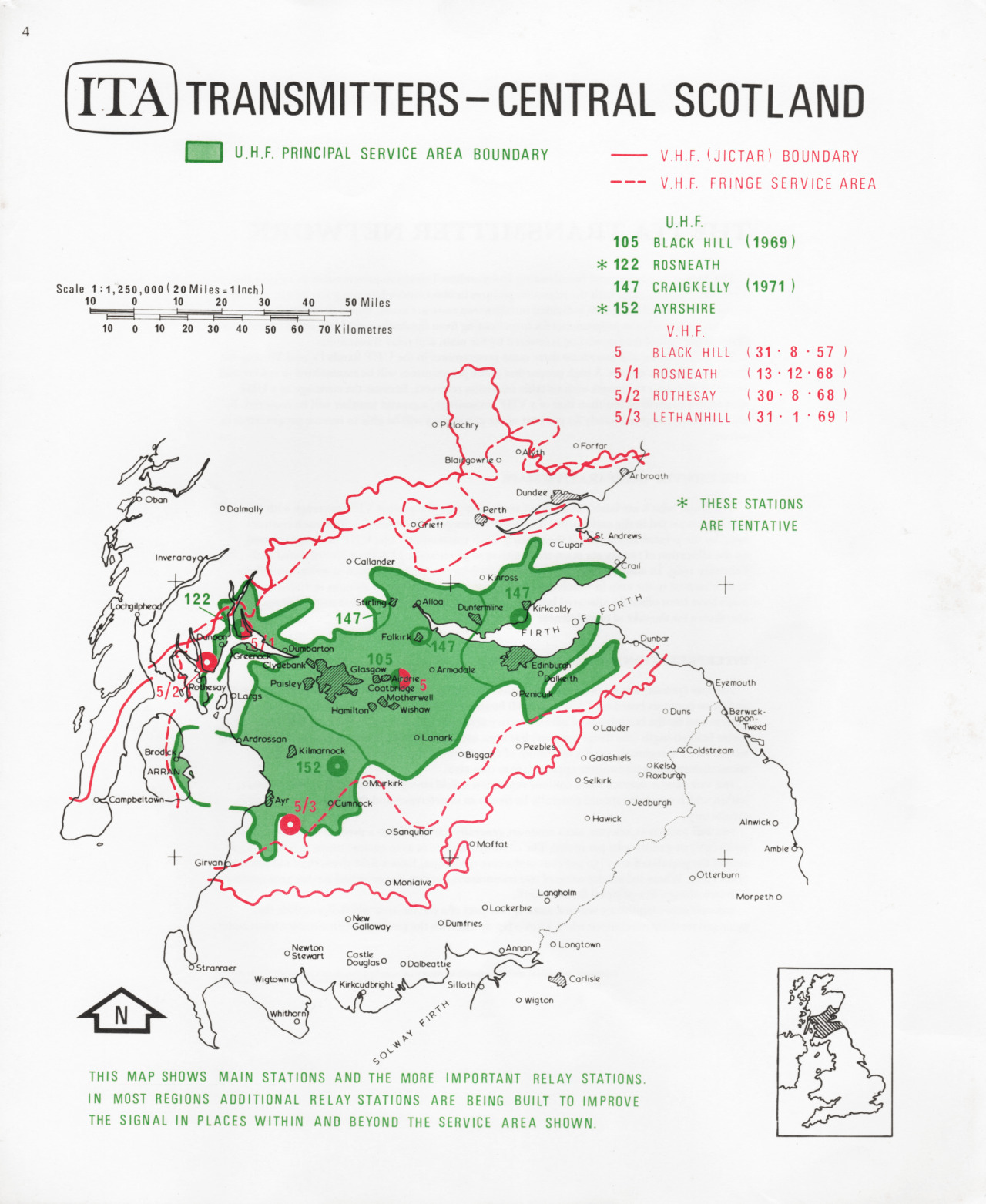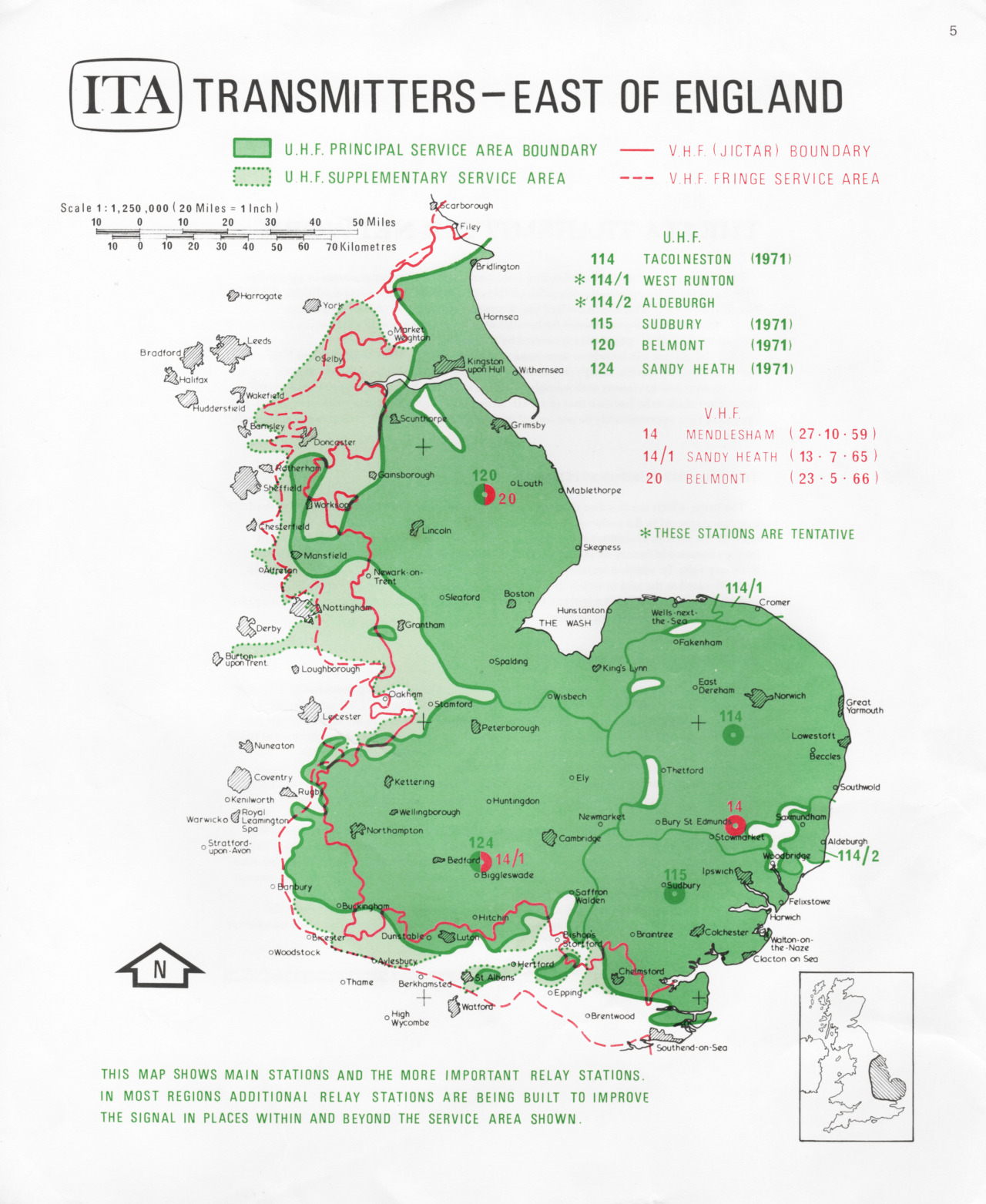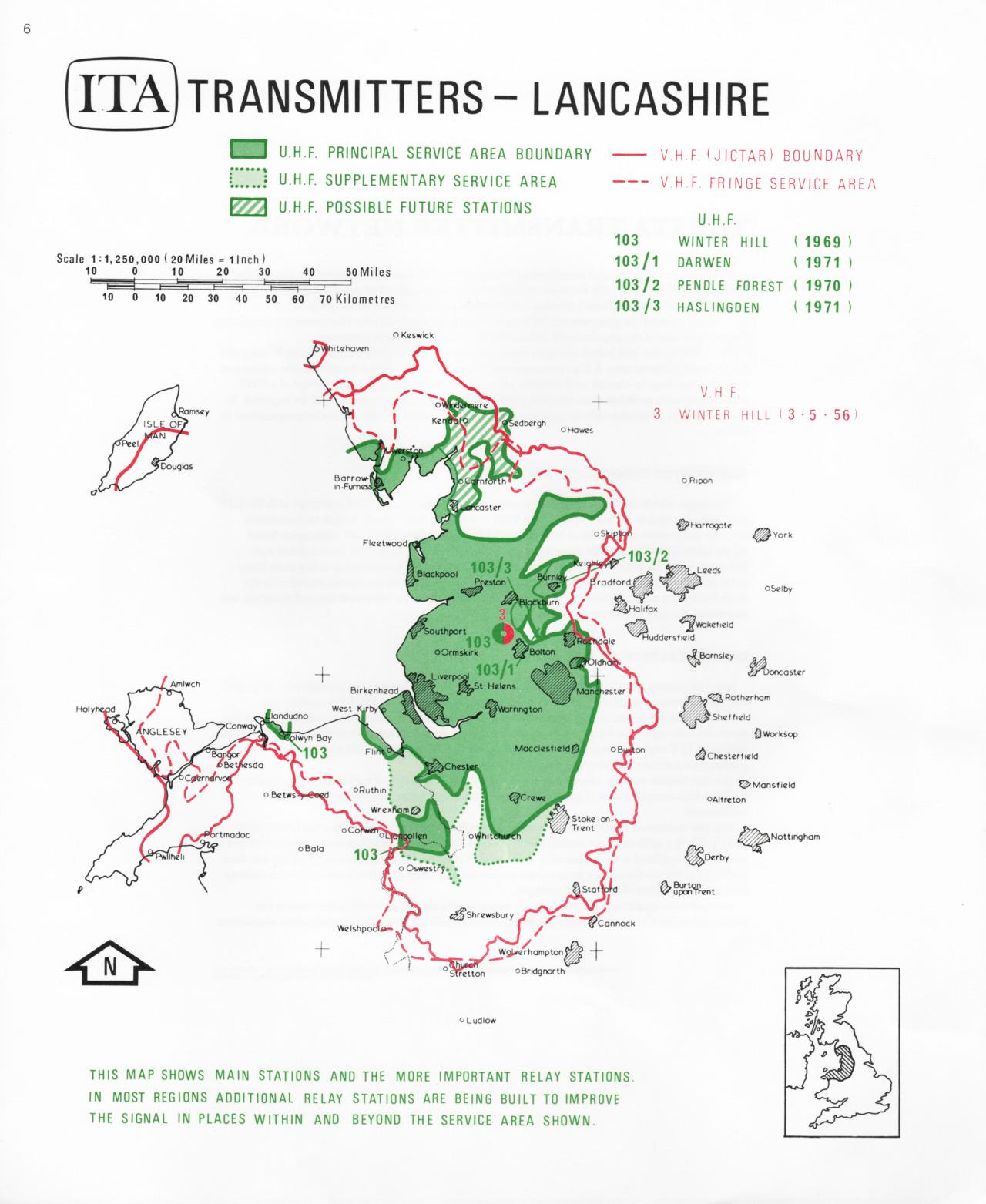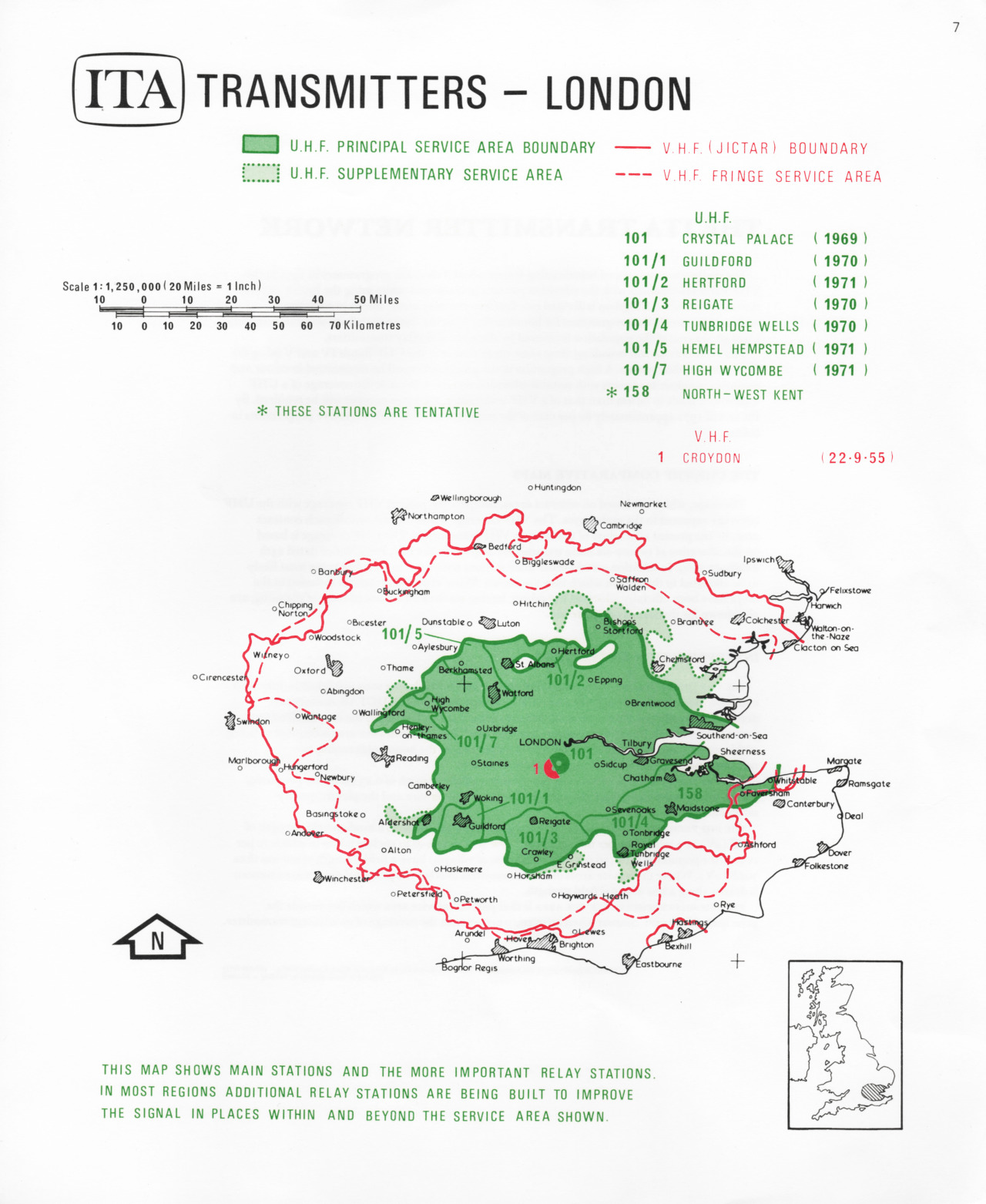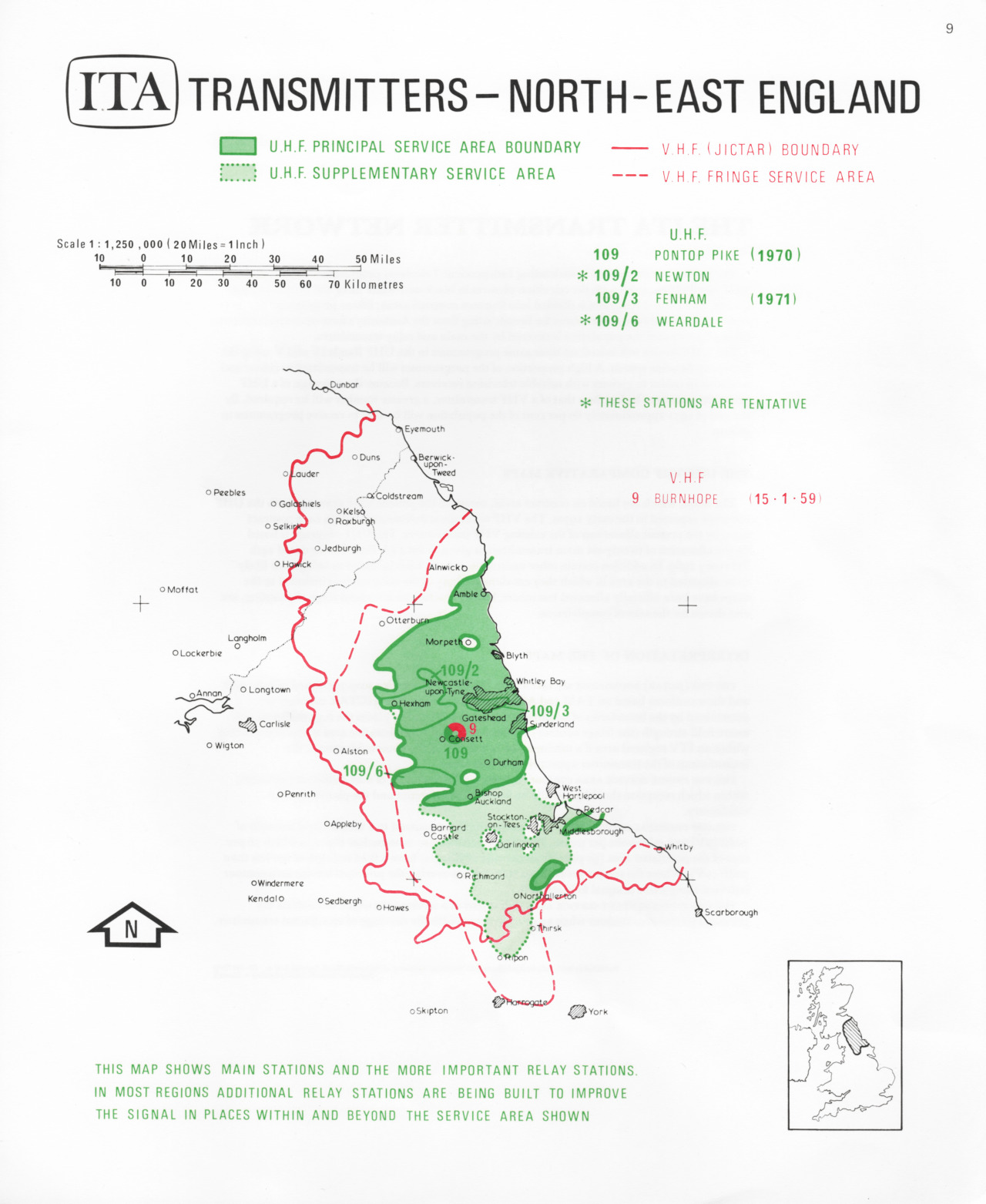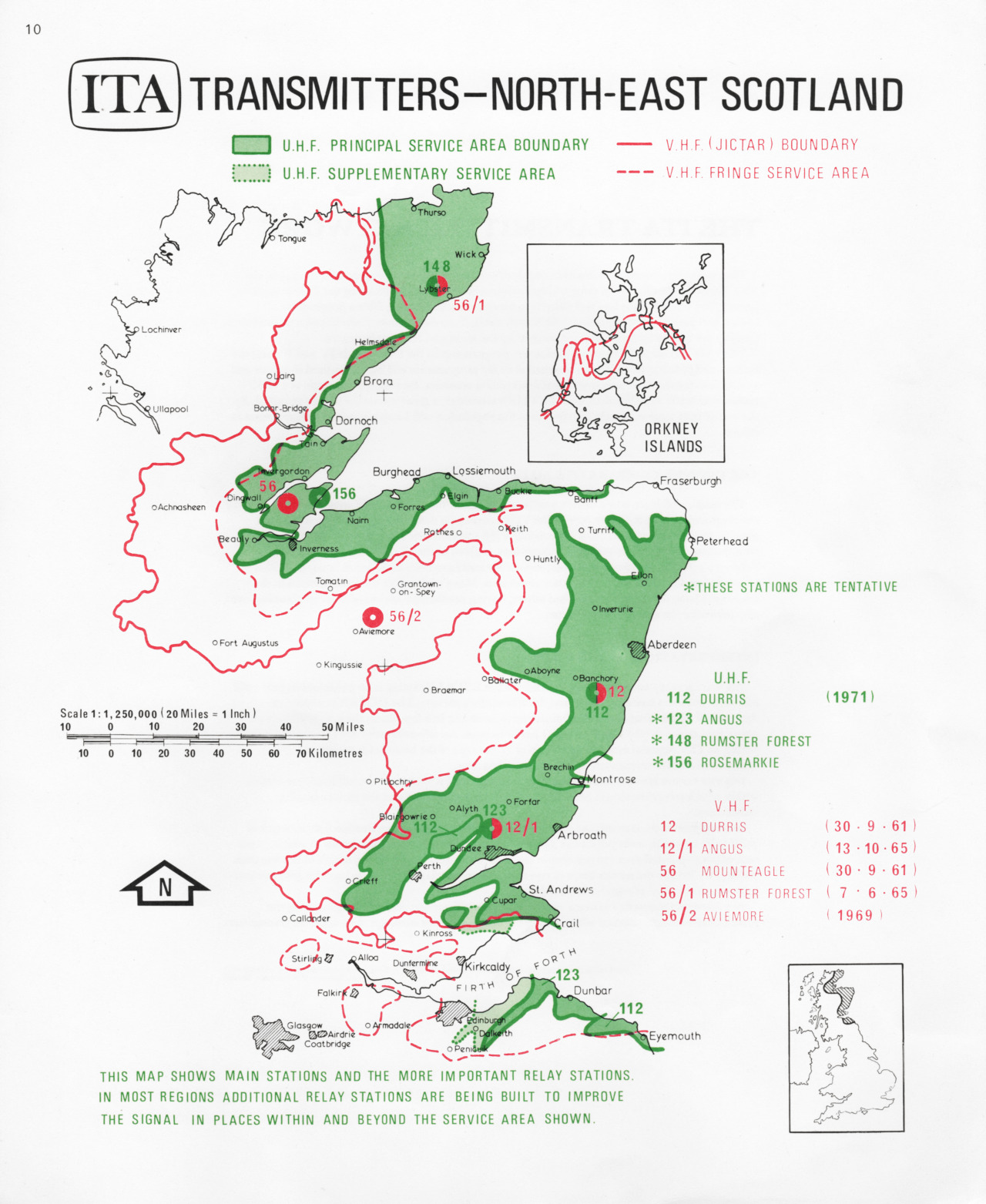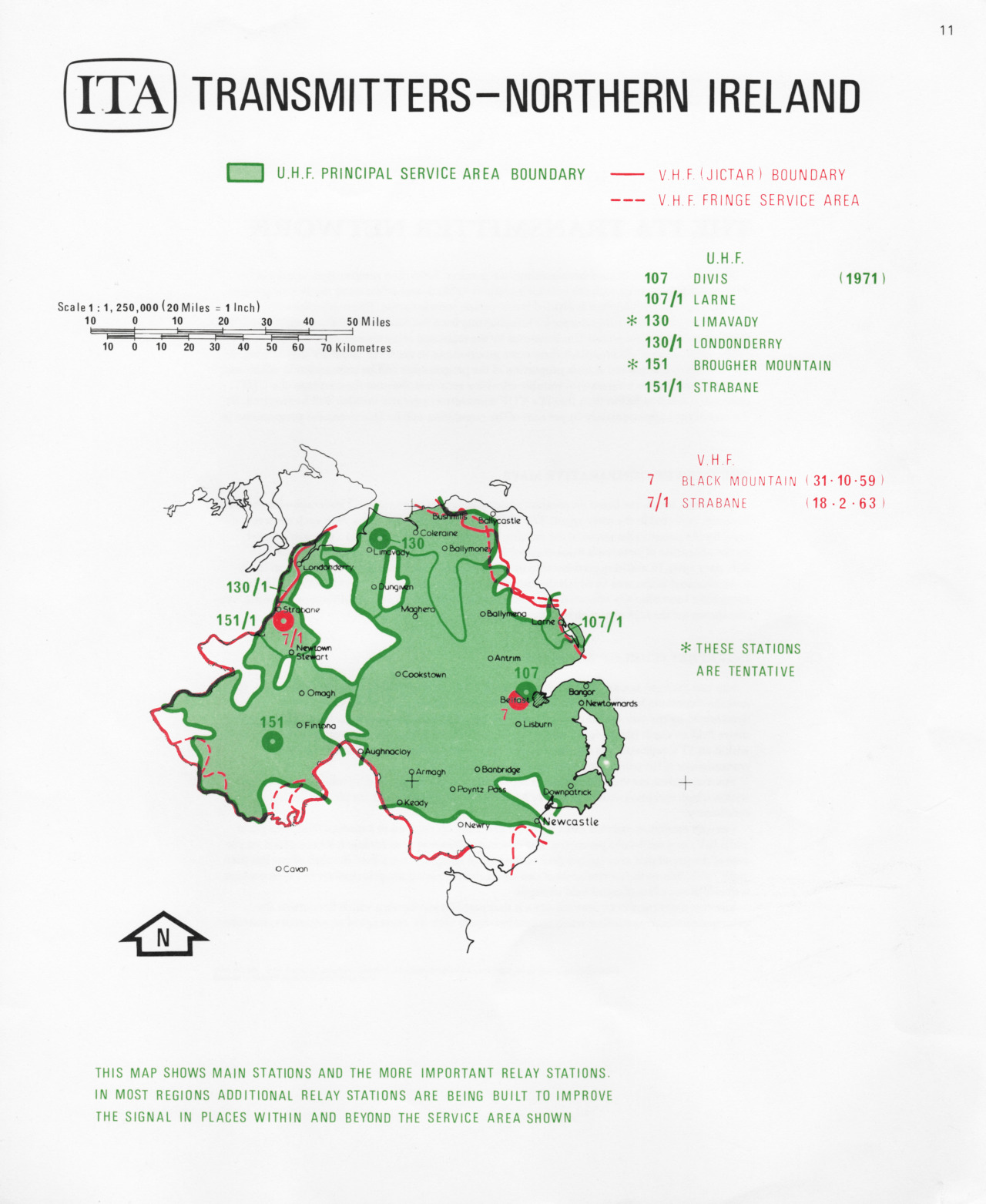THE ITA TRANSMITTER NETWORK
The Authority commenced broadcasting Independent Television programmes in 1955 in the VHF Band III channels with the television pictures in black-and-white using the British 405-line system. The United Kingdom is divided into fourteen contract areas; fifteen programme contractors provide the programmes for broadcasting from the Authority’s forty-seven transmitters. Over 98 per cent of the population is covered by the main and relay transmitters.
THE UHF/VHF COMPARATIVE MAPS
The maps, which are based on contract areas, compare the present VHF coverage with the UHF coverage expected in the early 1970s. The VHF coverage is determined, within each contract area, by the present allocations of the existing VHF transmitters. The UHF coverage is based on the allocation of twenty-six main transmitters as given in the ITA Press Notice dated 24th February 1969. In addition certain other main stations have been included as being most likely to be allocated to the area in which they are shown. Many of the relay stations included in the maps have been officially allocated but others, having reached an advanced stage of planning, are also shown for the sake of completeness.
INTERPRETATION OF THE MAPS
THE VHF (JICTAR) BOUNDARIES are taken from the BBTA Marketing map published in July 1968 and show contours based on TAM and AGB boundary surveys. The JICTAR contours are determined by the boundaries of administrative areas but in a few places the 0.25 milli-volt per metre field strength (the fringe contour) has been used. An administrative area is counted as being within an ITV regional area if a minimum of 15 per cent of the households receive the transmissions of the transmitter appropriate to that area.
THE VHF FRINGE SERVICE AREA contour represents a field strength of 0.25 milli-volt per metre, within which reception should generally be free from interference and the picture quality satisfactory.
THE UHF PRINCIPAL SERVICE AREA contours generally correspond to a median field strength of 70db (µV) or 3 milli-volts per metre. The contour is drawn so as to enclose towns in which 70 per cent of the populated area (50 per cent in the case of villages) have a field strength of not less than 70db (µV). Where the service areas of two transmitters overlap the principal service area contour is drawn along a line of equal field strength.
THE UHF SUPPLEMENTARY SERVICE AREA is that part of a service area which lies outside the principal service area contour when an overlap occurs with the coverage of an adjacent transmitter.
Published in April 1969 by the Independent Television Authority, 70 Brompton Road, London S.W.3. (01-584 7011)

